Author: YBB/ Source
Translation: vernacular blockchain
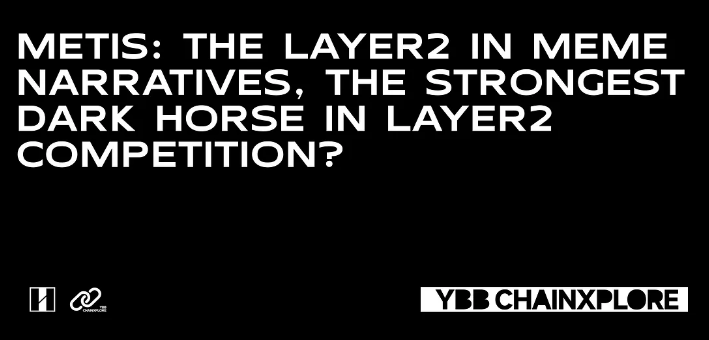
Layer2 was supposed to be a "traditional Ethereum" scaling path, but Metis was labeled MEME Layer2 because there were rumors that the founding team of Metis was "Vitalik Buterin's mom/best friend." Known as MEME Layer2, Metis is undoubtedly a direct attack on investors’ faith in Ethereum’s legacy. However, the essence of blockchain is still "code + finance". From an investment perspective, technology and market have always been competing factors. Whether Metis can take advantage of other Rollups' lack of decentralized sequencers and economic model control , stand out?
1. Introduction to Metis

Left natalie Ameline, right Elena Sinelnikova
According to the official Metis website, Metis co-founder and CEO Elena Sinelnikova has been committed to promoting education and popularization of the blockchain industry. She is a co-founder of the educational nonprofit CryptoChicks, which is currently the world's largest female blockchain community with members in 56 countries. Another co-founder of CryptoChicks is Natalia Ameline, the mother of Ethereum founder Vitalik Buterin. In addition, Vitalik Buterin’s father, Dmitry Buterin, led the creation of Blockgeeks, a blockchain education company dedicated to developing courses related to blockchain technology. Metis Network was established in 2018 and launched in May 2021.
Metis is a Layer 2 based on the Ethereum chain, follows the same principles as other Layer 2, and is one of the earliest forks of Optimism. Its biggest attraction is that it is the first OP Rollup to successfully decentralize the sorter. The network uses a PoS (proof-of-stake) sequencer pool to ensure continuous network availability, censorship resistance, and enables fee sharing and sequencer staking. These sequencers are responsible for determining the order in which transactions are packaged, and signatures from at least 2/3 of the sequencers in the sequencer pool must be obtained before data can be packaged and uploaded to the Layer1 network. To prevent malicious behavior by the sequencer, Metis also introduces the role of validators, which sample blocks to ensure that the sequencer orders transactions correctly.
The advantages of MPC (Multi-Party Computation) are privacy protection and decentralization, and it is very effective for simple Boolean operations. However, the disadvantages are also obvious, because there are no relay nodes to distribute information, the number of communications increases, and the cost of communication within the network rises significantly. This disadvantage will be more obvious in blockchain networks that require consensus. In short, Metis turns a single point orderer into a orderer pool to allow decentralized orderers to reach consensus to complete signatures, and achieve decentralization through a node staking mechanism and a rotation mechanism, which may ultimately require no more than Layer 1 Much lower network costs, but enables MEV resistance + solves the single point of failure problem while distributing benefits to node stakers. However, neither Metis' MPC solution nor Radius' public Mempool solve the problem of decentralized orderers adding burden to the network and ultimately passing the cost on to users.
The recent surge in Metis TVL has drawn attention to the importance of decentralized sequencers, and according to L2BEAT data, the OP scheme currently ranks fifth among all Layer 2 networks in terms of TVL. Apart from market value considerations, the author believes that most of Metis' solutions are reasonable and are standard decentralized sorter solutions. The design intention is not only to actively distribute the pie, but also to demonstrate to the market the value capture of Layer 2 native tokens, which is not limited to gas fees and governance.

Source: L2BEAT 24/02/01
2. Three major elements of Rollup
Rollup is one of the Layer2 solutions, also known as "Rollup". It works by migrating transaction calculation and storage performed on the main Ethernet network (i.e. Layer1) to Layer2 for processing and compression, and then uploading the compressed data to the main Ethernet network, thus extending the performance of Ethernet.
Rollup can be divided into ZK Rollup and Optimistic Rollup according to the scheme used to ensure the validity of the compressed data (that is, the correctness of the data). It involves off-chain computation, with transactions being packaged on-chain every few minutes for rolling verification and accounting, hence the name . However, even though we usually call it a Rollup chain, the off-chain part of a Rollup is not a complete blockchain, but a bunch of transactions rolled up to form a Rollup transaction. All nodes that receive the Rollup transaction do not execute the logic of being rolled. , and only execute the execution result of this logic.
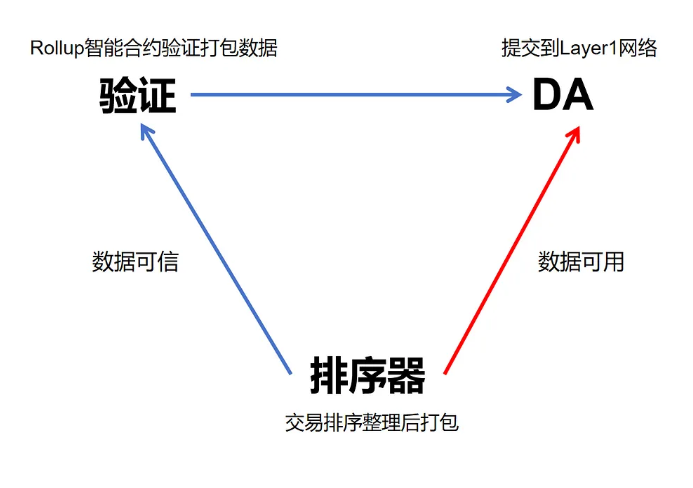
1) Sequencer
In Layer2, the Sequencer is the role responsible for sorting, organizing, packaging and submitting transactions to the Layer1 network. Currently, most Layer 2 projects rely on a single sequencer (usually the project itself) to do the above, but this also has two security issues:
Single point of failure: If the sequencer fails due to an attack or technical failure, the entire network will be shut down;
Scalability issues: A single sequencer may struggle to cope with increased transaction volume.
2) Verification
During the transaction, the packed data sent by the sequencer needs to be verified. Currently, most Ethereum Rollup verification is performed by Ethereum Rollup smart contracts to ensure the credibility of the data. There are two different verification methods: ZK Rollup (Zero Knowledge Rollup) and Optimistic Rollup. For example:
ZK Rollup:
Verification method: ZK Rollup uses zero-knowledge proof to verify the correctness of all transactions that occur in Layer2. Zero-knowledge proofs allow validators to confirm the validity of a transaction without knowing the details of that transaction;
Privacy protection: ZK Rollup emphasizes user privacy because the "proof" of the calculation is submitted on Layer1, not the details of the transaction. The details of the transaction are executed on Layer2, while Layer1 only verifies the validity of the zero-knowledge proof.
Optimistic Rollup:
Verification method: Optimistic Rollup adopts an "optimistic" strategy, assuming that all transactions are legal and verifying only when necessary. Verification is carried out through fraud proof, that is, a proof is submitted on Layer1 to prove that a transaction on Layer2 violates the rules;
Real-time: Since all transactions are assumed to be legitimate, Optimistic Rollup's transactions on Layer 2 can proceed quickly and are only verified when disputes or disagreements arise.
3) DA (data availability)
DA, or Data Availability, publicly publishes the status data of each transaction processed off-chain so that other participants can also access and use these transaction status data. Some Layer2 writes transaction status data to Ethernet Layer1, thereby implementing DA. There are also Rollup-Layer2s that write transaction-critical data to third-party blockchains, where data availability assumes the data is trustworthy. For example:
DA in Optimistic Rollup: Ensure that the data of all transactions on Layer2 is available on Layer1. If data is unavailable, anyone can dispute it on Layer 1, which helps prevent potential data tampering or omissions;
Commitments in ZK Rollup: In Layer2, the computation and storage of all transactions occur, but only the results of the computation (called commitments) are submitted to Layer1. Zero-knowledge certificates are used to prove that these promises are correct.
Note: In ZK Rollup, "commitment" focuses on verifying the correctness of the calculation results of transactions on Layer2, while "data availability" focuses on ensuring that Layer1 can access the data of all transactions on Layer2. Usually the two complement each other to ensure Overall system security and reliability.
Among the three key elements of Rollup, the sequencer is considered the most critical. The sequencer is responsible for performing the process of sorting and compressing Layer2 transaction information and passing it down. Since this process involves verification of the trustworthiness of the data, achieving data availability is critical. However, when the sequencer is decentralized, the trustworthiness verification and availability of the data may be less critical.
3. Metis decentralized sorter based on POS consensus
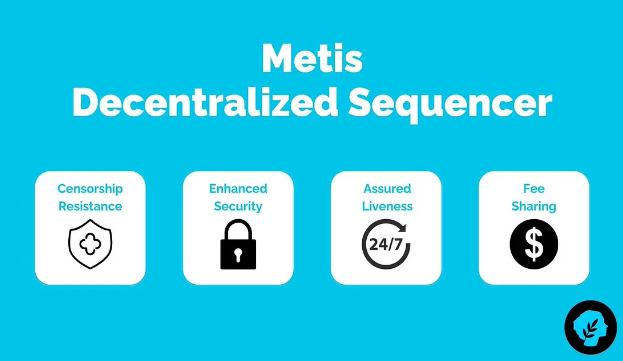
Source: MetisL2
1) Sorter selection
Metis Rollup improves on the "Transaction Data Verification Committee", introduces a role called "Verifier" in the Layer2 calculation process, and incentivizes verification nodes to quickly verify transactions through competitive mining. It introduces a role called "verifier" in the Layer2 calculation process and incentivizes verification nodes to quickly verify transactions through a competitive mining mechanism. This is achieved through a competitive mechanism. Similar to other Layer 1 (L1) networks that use proof-of-stake (POS) mechanisms, transactions on Metis need to be verified by nodes. Therefore, there is no issue of disputing the data packaged from Metis and transmitted to L1, avoiding the gap and delay issues of extracting assets from Metis into the main Ethernet network.
A significant difference of Metis Rollup compared to Optimistic Rollup is that it only takes a few hours or minutes to extract assets from Metis to the Ethernet L1 layer. This highlights Metis Rollup's efficiency and speed advantages in processing transactions. Generally speaking, the higher the lock amount, the higher the probability of a node joining the sequencer. Of course, there are also certain random factors in this.
2) MPC (Multi-Party Computation) is used for the sorter
Metis' decentralized implementation of the sequencer involves three key roles: administrator (Admin), sequencer and PoS-based consensus layer.
Administrator: Responsible for setting key parameters for the entire network, as well as managing the addition of sequencer qualifications to the pool. Protocol participants no longer directly have absolute control over such matters, but are instead executed by the administrator after the proposal is verified. One of the difficulties in achieving decentralization is that the sorter must be managed in a decentralized manner while remaining efficient and convenient;
Orderers: Metis uses MPC (Multi-Party Computation) signatures based on TSS (Threshold Signature Scheme) to manage the signing permissions of multiple orderers. Each sequencer has the authority to decide on a batch, and all sequencers are involved by means of MPC signatures. If the number of signatures exceeds 2/3, the batch is considered valid and can be submitted to the Rollup contract on L1. MPC signatures performed by the sequencer pool are managed by another contract in the PoS network. When the PoS network cannot detect the MPC address, the MPC module will be triggered to generate a key;
PoS-based consensus layer: The PoS network is responsible for managing contracts with sequencer signature authority, monitoring MPC addresses, and triggering key generation. The generated key is split and distributed to each sequencer in the pool for MPC signing. The settings of this module cover the life cycle management of keys, including multi-signature generation, key re-sharing, applying signatures and deleting signatures;
The reason for using TSS is its high fault tolerance and flexibility. Compared with multi-signature, TSS does not need to verify each signature on the chain, but rolls up the signatures of all signers and checks them uniformly, thus increasing the transaction confirmation rate. Additionally, communication between PoS nodes uses independent Tendermint channels, while MPC runtime communication uses the libp2p protocol. The entire system is designed to achieve efficient and secure decentralized management of sequencers.
Metis sequencer transaction flow:
User initiates transaction;
Transactions are forwarded to the network sequencer node;
Block generation: When the sequencer accepts a transaction as valid, a block is created;
Finalization: Multi-party computation (MPC) nodes discuss the merging of blocks and forward them to the main Ethereum chain.
3)MetisEDF
The Metis Ecological Development Fund (MetisEDF) provides financial support for this, covering many aspects, such as the development and deployment of incentive protocols, providing liquidity support, conducting security audits, and implementing liquidity mining solutions. Assignments include:
Sequencer Mining: 65.4% ($3M of $METIS / >$260M);
Ecosystem funding: 34.6% ($1.6M$METIS/>$140M).
4. Problems with centralized sorters
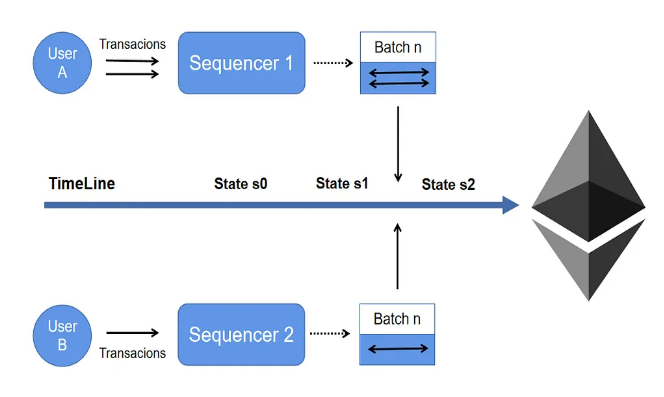
The principle of Ethernet is that each node stores and executes every transaction submitted by the user. This high security also makes the entire network very expensive, so it is necessary to expand the capacity of the entire network and adopt a Rollup solution. In short, Rollup = a set of contracts in Layer1 + its own network node in Layer2, that is, an on-chain smart contract + an off-chain aggregator, which relies on Ethereum for settlement, consensus and data availability, and is only responsible for executing the Rollup itself.
The smart contract on the chain means that its trust model is a smart contract on Ethereum, borrowing the security of Ethereum;
Off-chain aggregator, which executes and aggregates transactions off-chain, compresses large volumes of transactions and ultimately places them on the main Ethereum network for faster and cheaper transactions .
Layer2 network nodes have many components, among which the Sequencer component is the most important. It is responsible for receiving transaction requests at Layer 2, deciding their execution order and packaging the transaction sequence into a batch, and finally transmitting it to the Rollup project contract of Layer 1. While all Layer 2 Rollups on Ethereum have centralized Sequencers, Metis has become a decentralized Sequencer.
Layer2 full nodes can obtain the transaction sequence in two ways: directly from the sequencer, or by reading the transaction batch sent to Layer1 by the sequencer, but the latter has stronger immutability. Since transaction execution will change the state of the blockchain ledger, in order to ensure consistency, Layer 2 full nodes must synchronize the ledger state with the sequencer, in addition to obtaining the transaction sequence. Therefore, the task of the sequencer is not only to send the transaction batch to the Rollup contract of Layer1, but also to transmit the state update result StateRoot/StateDiff after transaction execution to Layer1. Generally speaking, the job of the sequencer is to process and sequence transactions, add them to the blockchain, and is responsible for batching transactions and publishing them to Layer1’s smart contract.
For Layer2 nodes, as long as they obtain the transaction sequence and the original StateRoot of Layer1 Rollup, they can restore the Layer2 blockchain ledger and calculate the latest StateRoot; conversely, the StateRoot calculated by the Layer2 node itself and the sequencer are published to the Layer1 intelligence If the StateRoot of the contract is inconsistent, it means that the sequencer is committing fraud. In short, Layer 1 is more decentralized, trustless, and more secure than Layer 2’s own network.
For example, OP Rollup allows all Layer2 nodes to provide fraud proofs proving that the data published by the Layer1 sequencer is wrong. But for Optimism without fraud proof, if it really wants to steal Layer2 users’ assets through the sequencer, all it needs to do is let the sequencer operator forge the transaction sequence and transfer other people’s assets from Layer2 to its own address, and then the stolen Tokens are ultimately transferred to Layer1 through the bridge contract provided with Rollup.
5. Thoughts on Metis
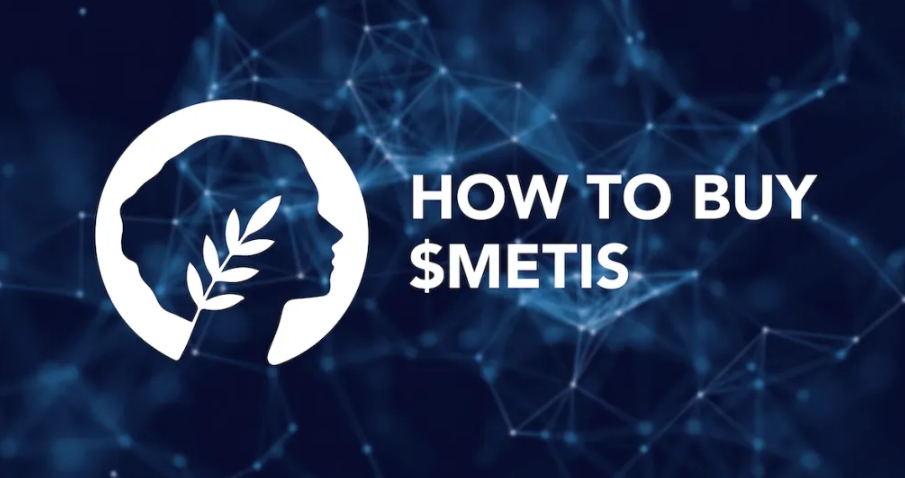
The most hyped Layer 2 upgrade recently is undoubtedly the Cancun upgrade, but it will not only benefit Metis, but will be universally applicable . Putting aside the “Vitalik Buterin’s mom/best friend” sentiment, the biggest competition between Metis and other Layer 2s is the economic model under decentralized sequencers and staking, and TVL shows that the overall market capitalization is more in line with the market’s feedback on Metis user confidence.
Unlike other Layer2s that hold their own funds and return more benefits to users, OP Rollup's economic model is strongly controlled and centralized. OP Token rewards are given to the ecosystem to stimulate development and use Gas spreads for profit, unlike Metis. That entrusts earnings and equity to the staking community. Unlike this approach, Metis has decentralized its revenue benefits to stakers to compete, significantly unleashing the financialization of Layer 2 infrastructure and attracting a lot of attention from the market.
MEME represents more of a culture and some socio-economic factors. It seems that in the process of buying MEME, in addition to its investment expectations of ten times, a hundred times or even a thousand times, more of it comes from our narrative and various factors. recognition and love, but it is justice that always drives the sector. Metis’s growing TVL is also a feedback from the market on its investment expectations. Leaving aside the technical aspects, if we consider the attribute issue from a market perspective, and if Mingmin is a tester of public chain performance, then MEME is to some extent a touchstone for market recognition.
Source: https://medium.com/ybbcapital/metis-the-layer2-in-meme-narratives-the-strongest-dark-horse-in-layer2-competition-672f629dc693







